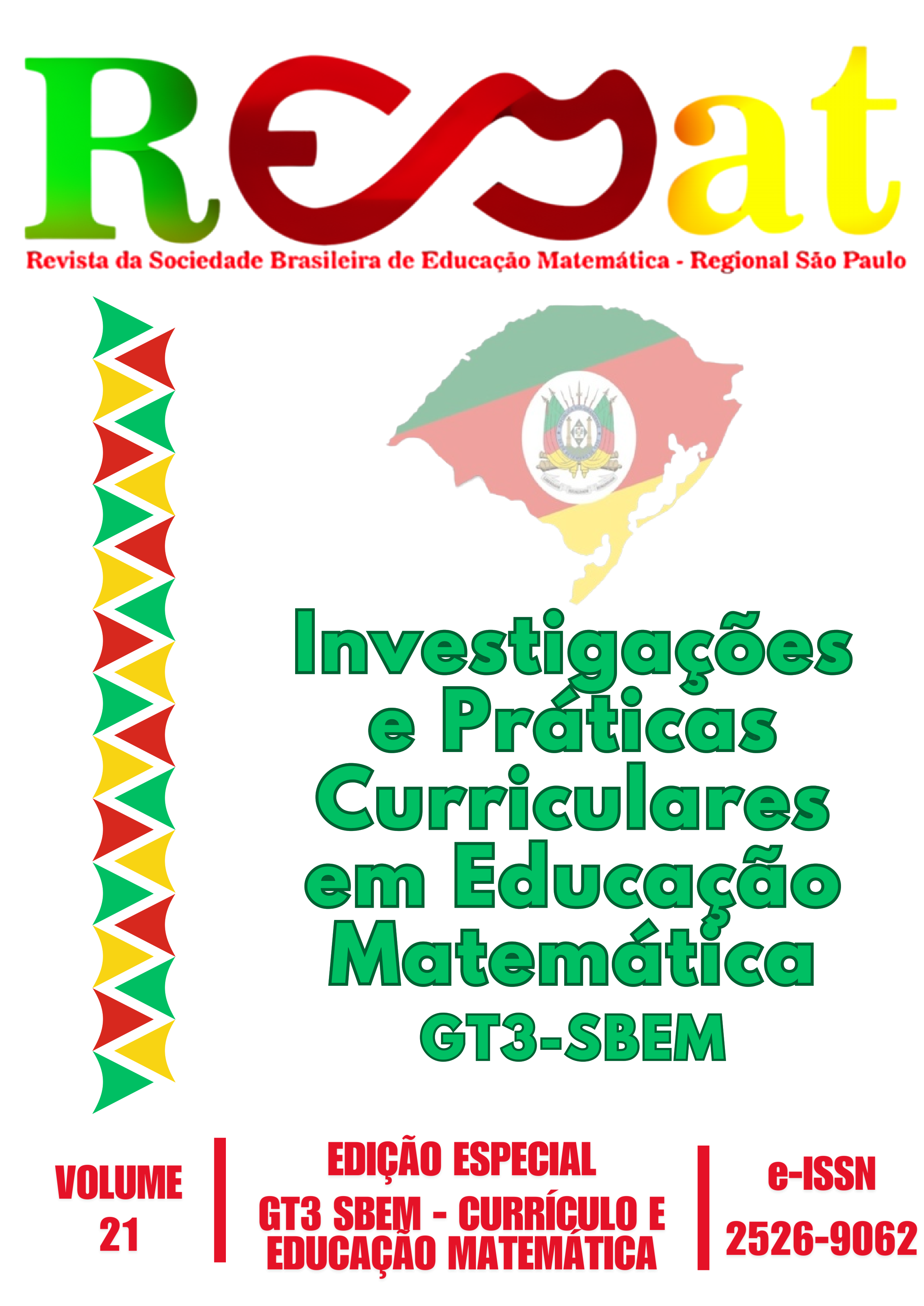O Novo Ensino Médio e as Prescrições Curriculares de Matemática para o Estado de São Paulo em 2024
DOI:
10.37001/remat25269062v21id518Keywords:
Ensino Médio, Base Nacional Comum Curricular, Currículo Paulista, Prescrições Curriculares, Recomposição da AprendizagemAbstract
After the implementation of the National Common Curricular Base – BNCC (Brazil, 2018), states and municipalities began to write their curricular prescriptions, since, from that moment on, we began to have an indication of the fundamental skills to be developed by students during Basic Education, as a way to achieve equity in education. Thus, this article aims to instigate reflection and discussion on the directions given in relation to the objects of knowledge to be worked on in the state network of São Paulo, mainly for the 3rd year of high school, since it is the students who are at the end of the Basic Education cycle, they will take the National High School Exam - Enem, the Provão Paulista and entrance exams for different Higher Education institutions. This reflection is necessary so that we can understand the direction that state education is taking, so that possible reformulations can be made, if necessary. To achieve our objective, we used a qualitative approach, through documentary and bibliographic research techniques. One of the points observed is that, even knowing the need to recompose learning, not only due to the pandemic period we have been through, but also due to the gap that has existed over the years, in terms of learning Mathematics, this work could be done throughout the teaching of objects of knowledge prescribed for the 3rd year of high school, in which the resumption of knowledge already constructed is possible.
Downloads
Metrics
References
BRASIL. Ministério da Educação. Base Nacional Comum Curricular. 2ª versão. Brasília: MEC, 2016.
BRASIL. Ministério da Educação. Base Nacional Comum Curricular. Versão Final – Etapa Educação Infantil e Ensino Fundamental. Brasília: MEC, 2017.
BRASIL. Ministério da Educação. Base Nacional Comum Curricular. 3ª versão – Etapa Ensino Médio. Brasília: MEC, 2018.
CRESWELL, J. W. Projeto de pesquisa: métodos qualitativo, quantitativo e misto. Porto Alegre: Artmed, 2007.
LUCKE, M. ANDRÉ, M. Pesquisa em educação: Abordagens qualitativas. São Paulo: EPU, 1986.
PASSOS, C. L. B.; NACARATO, A. M. Trajetória e perspectivas para o ensino de
Matemática nos anos iniciais. Estudos Avançados, V. 32, N. 94, (pp. 119-135), 2018.
Disponível em: https://www.scielo.br/scielo.php?script=sci_arttext&pid=S0103-
SÁ-SILVA, J. R. S.; ALMEIDA, C. D.; GUINDANI, J. F. Pesquisa documental: pistas teóricas e metodológicas. Revista Brasileira de História e Ciências Sociais, v. 1, p. 1-15, 2009.
SÃO PAULO. Currículo do Estado de São Paulo: Matemática e suas tecnologias /Secretaria da Educação; coordenação geral, Maria Inês Fini; coordenação de área, Nilson José Machado – São Paulo: SEE, 2010.
___________. Secretaria de Educação do Estado de São Paulo. Currículo Paulista Ensino Médio, SEDUC/Undime SP. São Paulo: SEDUC/SP, 2020.
___________. Secretaria de Educação do Estado de São Paulo. Aprender Sempre. São Paulo: SEDUC/SP, 2024.
SEVERINO, A. J. Metodologia do trabalho científico. São Paulo: Cortez, 2007.
TEIXEIRA, A. C. Os números racionais nos níveis curriculares da rede estadual de ensino de São Paulo. 2018. 255 f. Tese (Doutorado em Ciências e Matemática) – Universidade Cruzeiro do Sul, São Paulo, 2018.
VALENTE, W. R. A matemática do ensino e os documentos curriculares: história da produção de novos saberes. Revista de Educação Matemática REMat, v. 20, p. 1-23, 2023.
Downloads
Published
Métricas
Visualizações do artigo: 547 PDF (Português (Brasil)) downloads: 224
How to Cite
Issue
Section
License
Copyright (c) 2024 Revista de Educação Matemática

This work is licensed under a Creative Commons Attribution-NonCommercial-NoDerivatives 4.0 International License.


 Português (Brasil)
Português (Brasil)
 Español (España)
Español (España)
 English
English






































